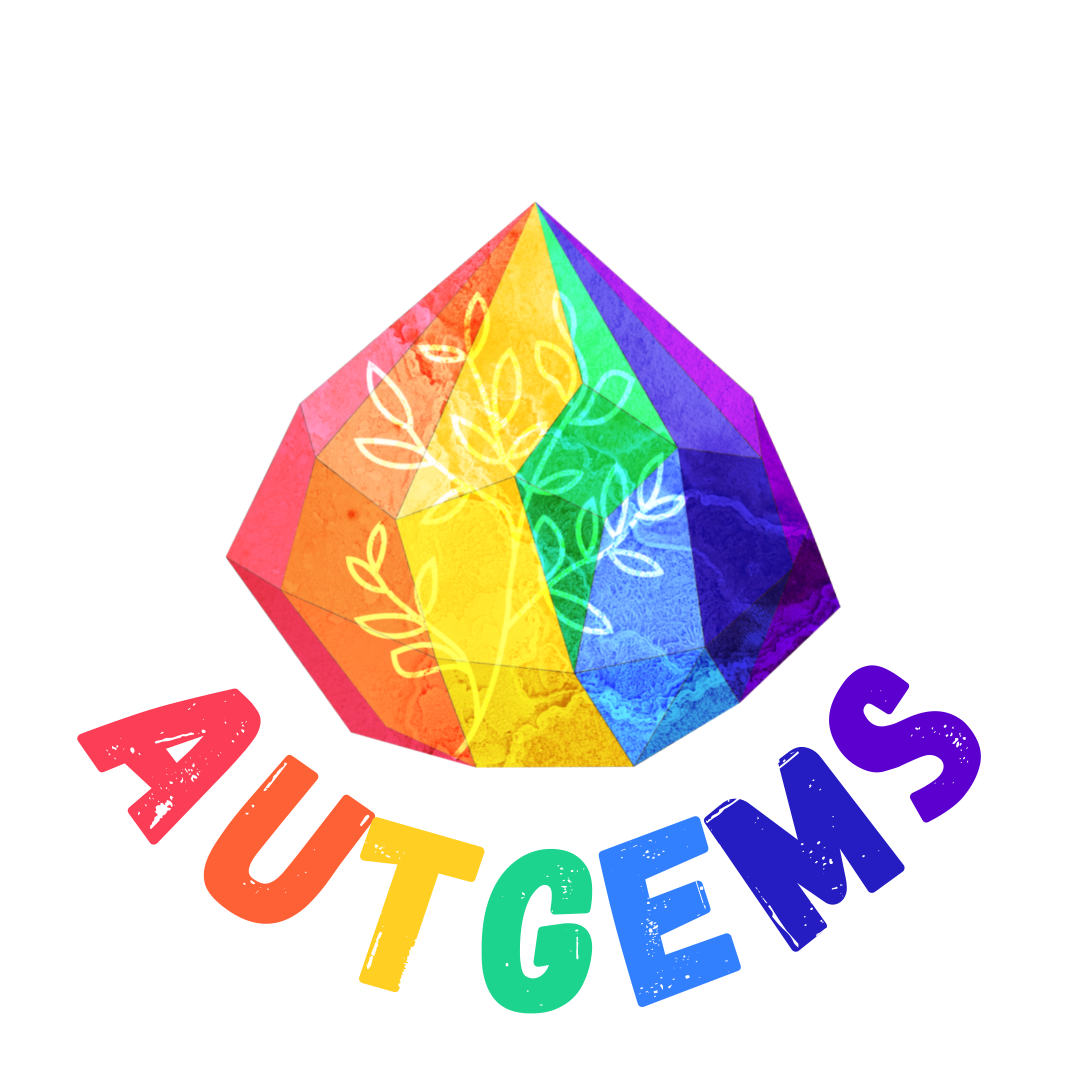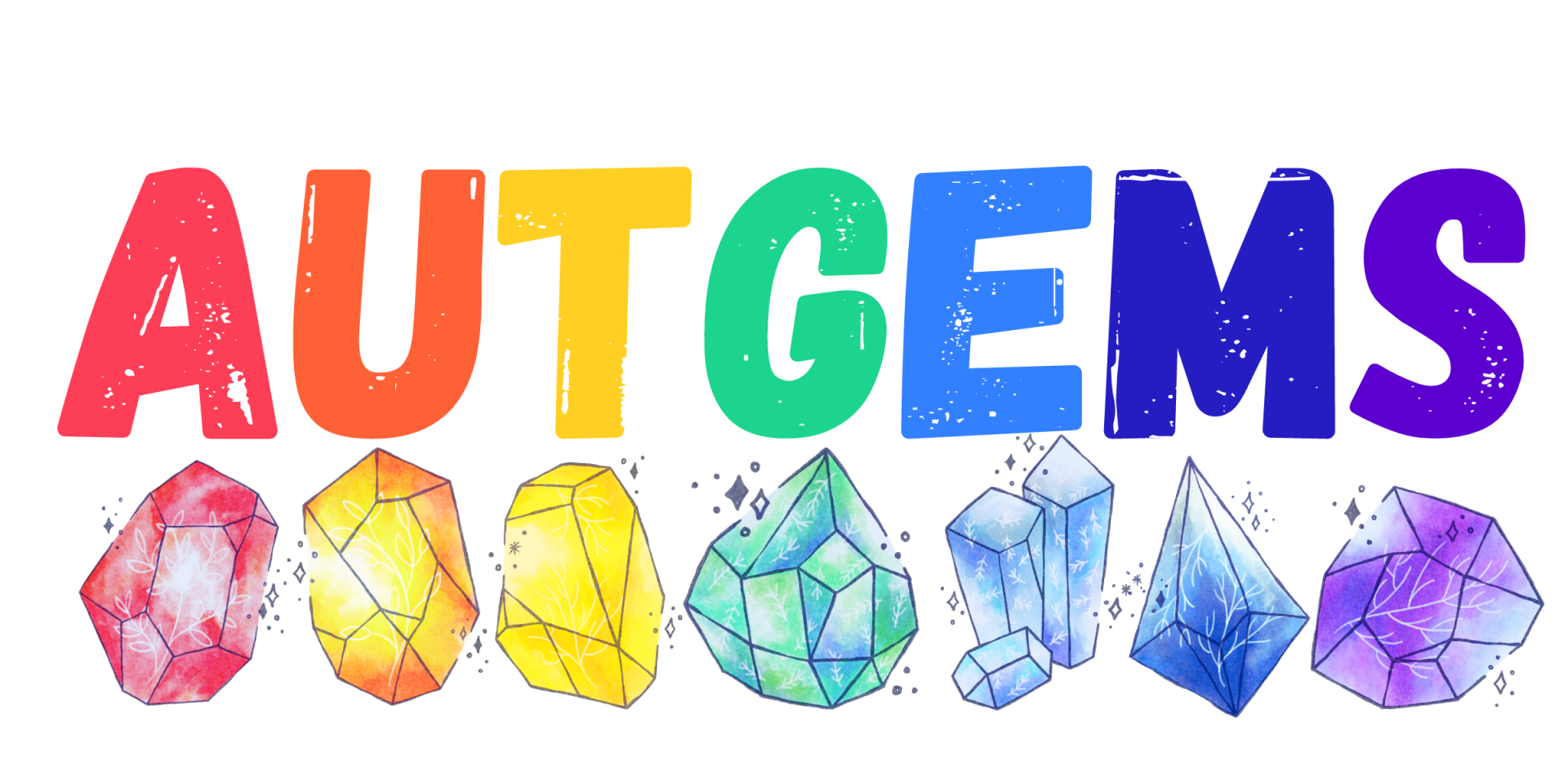Mythbusting
A bit about autism mythbusting
Autism is complex, and our understanding of it is still quite limited and slow to spread. While many early ideas about autism are now understood as incomplete or outright false, much from those initial theories persists as stigmas and stereotypes. They are harmful to all Autistic people, and especially to those of us in other minority groups (gender, race, etc.). Here are some common myths about autism - click on each to see its corresponding explanation.
-
Myth: Autistic people are unfeeling or unempathetic.
Autistic people experience the world differently. This extends to feeling things differently, and expressing feelings differently. This difference is often perceived as a lack of feeling, or a lack of empathy.
This difference has been explained with the "double empathy problem": both Autistic and non-autistic people lack understanding and insight into sociality, culture, and communication of the other group. Since non-autistic people form the majority group, non-autistic ways of communication and empathy are considered to be "normal" and "correct", while Autistic ways are considered "incorrect".
Learn more about the double empathy problem here:
Milton's 'double empathy problem': A summary for non-academics | reframing Autism
-
Myth: Autistic people are either “low-functioning” or “high-functioning”.
So-called "functioning labels" are used to describe how well Autistic people can follow societal norms. Someone is typically called "high-functioning" if they don't appear Autistic - maybe they show average or above-average intellect, or they seem like they succeed in school/at work/in relationships, or they don't outwardly display traits associated with autism. Much of this is due to masking or camouflaging - Autistic people may be able to "fake" fitting in, but it comes at a high expense to our health. The "high-functioning" label often results in a lack of support, to the extent that even professionals may not be able to see beyond our masking or acknowledge Autistic traits.
"Low-functioning", by contrast, is often used to describe people who display outward stereotypes of Autism. They may have an intellectual disability, repetitive behaviours may be more visible, or they may rely on Augmentative and Alternative Communication (AAC) instead of speaking. The "low-functioning" label often results in a lack of agency, as professionals and/or caregivers may assume a lack of ability to understand or consent from a lack of ability to communicate.
As our understanding of Autism and associated perceptions evolves, support needs are commonly used: "high-functioning" would typically correspond to "low support needs", and "low-functioning" to "high support needs". These labels are also misleading, however, as they imply that support needs are static. Being chronically undersupported can increase support needs, or having comfortable, person-centred support can lower support needs.
Specific descriptions of support needs - for instance, someone may have food restrictions or need help with scheduling - is even more aligned with a person-centred approach. Learn more at the below link:
https://autisticadvocacy.org/2021/12/functioning-labels-harm-autistic-people/
-
Myth: Autism ranges from mild to severe.
Similar to functioning labels (see previous myth), severity is another descriptor used to stereotype Autistic people, such as:
● "mild autism" or "severe autism"
● "high on the spectrum" or "low on the spectrum"
Someone labelled as severely Autistic would often be considered as more Autistic than a so-called mildly Autistic person. The autism spectrum is often oversimplified as a gradient - mint green is less intense than kelly green, but both shades are equally green.
Instead, autism can be viewed as a “cloudy constellation of uneven skills” (Kapp, 2018, p. S364) that can vary from day to day.
Find more information below:
http://www.autisticscholar.com/the-autism-constellation/
-
Myth: There’s an epidemic of autism diagnoses.
There is not an epidemic of autism diagnosis. Actually, one could argue that autism is still underdiagnosed. In order to understand this issue, one has to understand the history of autism and the timeframe when autism diagnosis came to the fore.
From the early 1900s to 1960s society was quite patriarchal and most medical/psychological research was performed on white males. Due to this exclusiveness, any variation due to gender or ethnic difference was eliminated from the diagnostic criteria. As society became more inclusive of human diversity, professionals found that diagnostic criteria for autism required changes, and autism diagnostic criteria became viewed as a spectrum rather than fixed criteria. As the diagnostic criteria evolved to be more inclusive, many people who were previously excluded were now fitting within the new inclusive diagnostic criteria. Side note; this is where the term ‘late diagnosed Autistic’ comes from and these are the adults who as children did not fit within the narrower diagnostic criteria.
As autism research has become more inclusive of gender and ethnic diversity, autism diagnosis has increased but due to changing exclusive views to inclusive ones, and not due to epidemic factors.
In the 1960s it was common practice to blame mothers of Autistic children as being ‘refrigerator mothers’ who did not provide the emotional support necessary for ‘proper’ development of their child. Given these views, it is understandable why many would not come forward to have their and/or their children’s struggles dealt with in the system which stigmatised them.
Today there is more of an openness and caring to individual struggles, and the stigma of outwardly identifying those struggles has decreased somewhat.
For more information:
https://www.spectrumnews.org/news/evolution-autism-diagnosis-explained/
-
Myth: Everyone’s a little bit Autistic.
As Lynch (2019) explains it, “...when someone says “we’re all a little autistic” because they also hate fluorescent lights or because they also feel awkward in social situations. That’s like saying that you are dressed “a little rainbowy” when you are only wearing red.
Having sensory processing issues doesn’t make you “a little autistic.” It makes you someone with sensory processing problems. Autistic people will understand your struggles and welcome you as a fellow neurodivergent cousin, but that’s it.
But in order for a person to be considered autistic, they must have difficulty in multiple categories spanning the spectrum. Diagnosis depends on evidence that you do span the spectrum in observable ways.”
See more at:
https://neuroclastic.com/its-a-spectrum-doesnt-mean-what-you-think/
A 2021 blog post by Autism Spectrum Australia adds: “Most people can relate to or understand some Autistic experiences. For instance, we might understand how it feels for a pregnant person to be tired – but that doesn’t necessarily make us pregnant! Although it is good to try to find ways to connect with people, some Autistic people feel this saying diminishes the challenges they face, so their problems aren’t taken seriously.”
https://www.autismspectrum.org.au/blog/common-myths-about-autism
-
Myth: Autism is caused by vaccines.
-
Myth: Autistic people don’t want relationships.
-
Myth: Autistic people can’t work.
On the contrary, Autistic people can work and can be great assets within the work environment. Unfortunately, many Autistic adults tend to face many barriers when trying to obtain and maintain employment. This is supported by American data that shows the unemployment rate for Autistic adults is greater than 50% (Ohl, et al., 2016) and has been found to be as high as 80% (Wong, et al., 2020). Barriers to employment may include (but are not limited by): personal factors or traits of ASD, co-occurring psychiatric conditions, variance in ability and modalities for communication, difficulties in job seeking, challenges with traditional interview setting/style, higher frequency of termination from jobs, longer periods of unemployment, being underemployed, as well as difficulties on the job (i.e. sensory challenges, interpersonal challenges, etc).
Ohl, et al. (2016) showed that disclosure of being Autistic resulted in a three times greater chance of being employed and sustaining their employment. Disclosure enabled employers to better support employees by providing accommodations as well as opening the communication between the employer and the employee. Although, it should be acknowledged that many Autistic adults do not disclose that they are Autistic due to fear and the stigma that still exists about being autistic.
Given the right work environment, embracing autistic characteristic strengths, providing modifications (i.e. work environment, type of work, how work is completed, extended timelines, etc.), and providing meaningful and appropriate work, autistic adults can not only maintain employment but thrive within their employment of choice (Wong, et al., 2021).
Additional information can be found here:
https://content.iospress.com/download/work/wor2492?id=work%2Fwor2492 (Ohl, et al., 2016)
https://www.rmci.ase.ro/no22vol5/02.pdf (Wong, et al., 2021)
https://www.nature.com/articles/s44159-022-00099-z#citeas (Pelicano, et al., 2022)
https://thinkingautismguide.com/2018/02/why-is-autistic-unemployment-rate-so.html
References:
Ohl, A., Grice Sheff, M., Small, S., Nguyen, J., Paskor, K., & Zanjirian, A. (2017, January 1). Predictors of employment status among adults with autism spectrum disorder. Work. Retrieved October 30, 2022, from https://content.iospress.com/articles/work/wor2492
Pellicano, E., Fatima, U., Hall, G., Heyworth, M., Lawson, W., Lilley, R., Mahony, J., & Stears, M. (2022, September 5). A capabilities approach to understanding and supporting autistic adulthood. Nature News. Retrieved October 30, 2022, from https://www.nature.com/articles/s44159-022-00099-z#citeas
Wong, P. S., Donnelly, M., Boyd, B., & Neck, P. (2021). Beyond adaptations and accommodations: Management practice that ... - ase.
https://www.rmci.ase.ro/no22vol5/02.pdf. Retrieved October 31, 2022, from https://rmci.ase.ro/no22vol5/02.pdf
-
Myth: Autism only affects white boys.
Similar to the epidemic myth, author of NeuroTribes Steve Silberman (2015) “[Dr. Leo] Kanner wished to avoid dilution of “his” syndrome, and discouraged diagnosis unless children precisely matched the core features he described in 1943. He once bragged that he turned away nine out of 10 of the children referred to his office for a diagnosis of autism.”
“In the US, this meant that parents through the 1980s often had to bring their child to nine or 10 specialists before finally obtaining an autism diagnosis, which meant that few working-class families or families of colour were able to afford one. And girls with autism were still virtually invisible to the psychiatric establishment until the end of the 20th Century.”
See more at:
https://www.bbc.com/future/article/20151006-its-time-we-dispelled-these-myths-about-autism
Further, “girls are more likely to 'mask' their autism, learning the skills to interact with the world better than boys. This can mean that many autistic girls get a diagnosis much later in life than boys.”
https://www.autistica.org.uk/what-is-autism/autism-myths-and-causes
Importantly, “...when we consider the experiences of Black students who may have neurotypes including autism, ADHD, dyslexia, etc., etc., that diverge from the so-called default… Some of these students may be termed as ‘troublemakers’ and ‘disruptive’ in classrooms when they simply have different ways of learning and being in the world” And instead of obtaining a diagnosis and getting support, students of colour have been more likely to fall through the cracks and be criminalized, as evidenced by the disproportionate representation of incarcerated neurodivergent People of Colour.
Please see more at:
And for more Black Autistic voices:
https://neuroclastic.com/category/culture-identity/people-of-color/black-autistic-lives-matter/
-
Myth: The puzzle piece and the colour blue are best associated with autism
The puzzle piece commonly seen in the media to symbolize autism is not embraced by most Autistic adults as it is considered childlike and implies that autism is something that needs to be solved, or that Autistic people are not whole, complete people, which obviously is neither true nor helpful to Autistic people. Instead, the Autistic community has adopted the rainbow infinity symbol which represents the spectrum of Autistic experiences on autistic terms.
See more at:
Similarly, the using the colour blue to represent autism, such as in mainstream “light it up blue” autism campaigns, is not supported by the Autistic community as it is viewed as promoting misguided messaging that autism is a boy’s issue, as well as promoting gender stereotypes. Instead, the Autistic community has started counter campaigns including wearing “red instead” - red being a more gender-neutral colour associated with more positive emotions than blue.
See more at: https://www.learnfromautistics.com/light-it-up-red-for-world-autism-awareness-acceptance-day/
New Paragraph

Autistic Gender Minorities Supporting Each Other
All Rights Reserved | AUTGEMS
AUTGEMS thanks the Alberta Government, Ministry of Culture, Multiculturalism and Status of Women for a CIP grant that supported the creation of this website.

